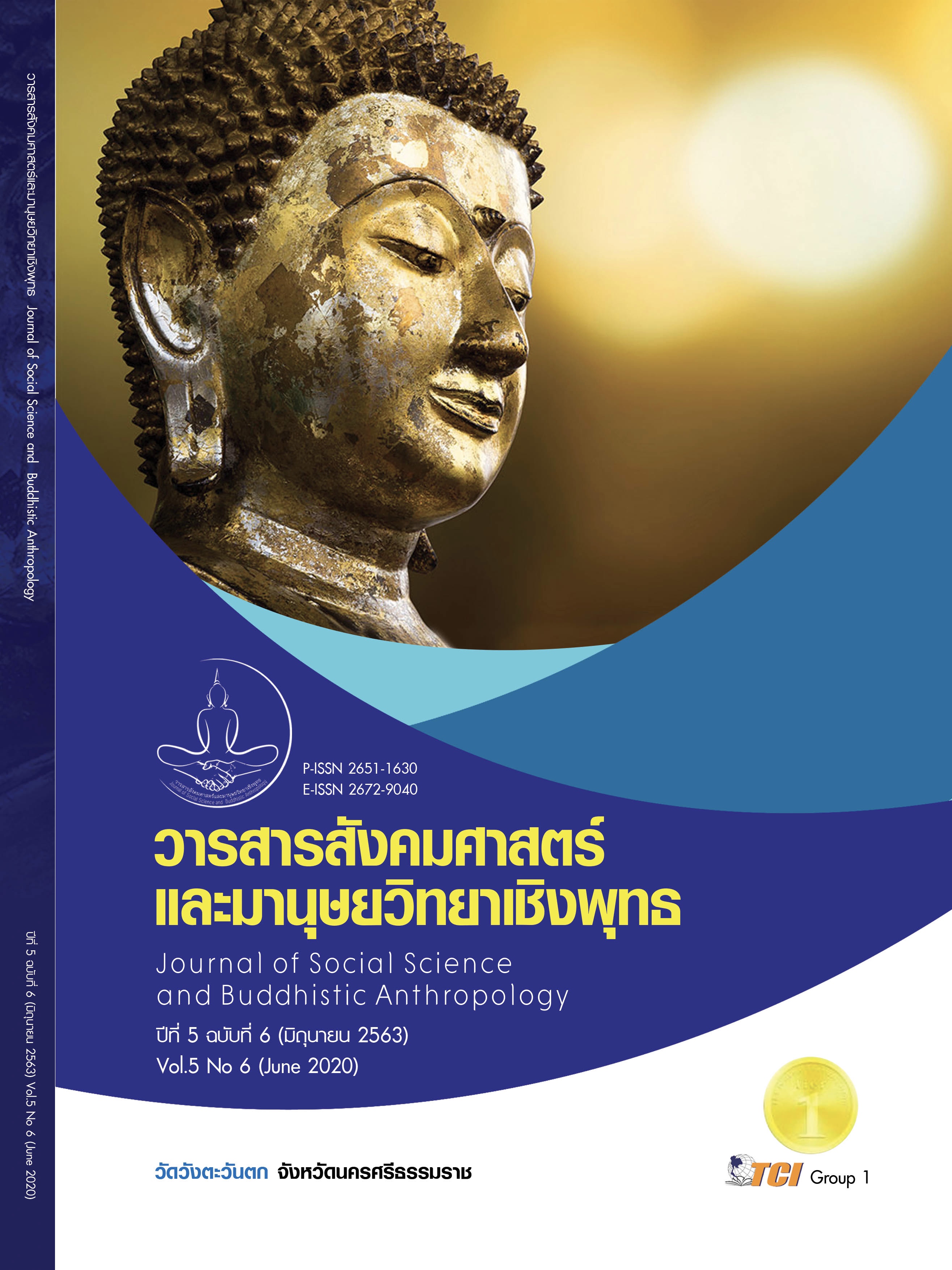THE EFFECTS OF USING SUCTION MODEL ON THE ABILITY TO SUCTION PROCEDURE IN NURSING STUDENTS OF BOROMARAJONANI COLLEGE OF NURSING SUPHANBURI
Keywords:
Suction model, Ability to Suction, Nursing StudentsAbstract
This study aimed to examine the effect of using suction model on the ability to perform suction procedure in nursing students of Boromarajonani College of Nursing Suphanburi. The study was a quasi-experimental one-group pretest-posttest research design. In this research, the suction model was created from low-cost materials but effective in suction procedure, including a plastic human model, Endotracheal tube, artificial lung, various joints, and artificial sputum made from cassava flour. The sample was 30 second-year nursing students of the academic year 2019 recruited using simple random sampling. Data were collected with self-assessment questionnaires assessing nursing students’confidence to perform suction procedure and satisfaction with using suction model of nursing students, and an evaluation check-list form of suction procedure ability by nursing instructors in nursing laboratory. Data were analyzed using mean, standard deviation, and paired t-test. The research results showed that: 1) the ability to perform suction procedure of nursing students after using suction model was significantly higher than before using suction model; 2) confidence to perform suction procedure of nursing students after using suction model was significantly higher than before using suction model; and 3) the nursing students had a good level of satisfaction of using suction model. From the results of this study, it can be concluded that the use of suction model helped nursing students develop confidence and ability to perform suction procedure. Therefore, suction model should be used in training nursing students before practice with the patients in clinic.
References
ชลฏา ไชยศรีปาน และเพียงฤทัย สกุลแก้ว. (2552). นวัตกรรมหุ่นจำลองเพื่อการสอนญาติ. เรียกใช้เมื่อ 27 ธันวาคม 2557 จาก http://medinfo2.psu.ac.th/
ชุลี โจนส์. (2557). กายภาพบำบัดทรวงอก ทางคลินิก Clinical chest physiotherapy. (พิมพ์ครั้งที่ 3 ฉบับปรับปรุง). ปทุมธานี: โรงพิมพ์มหาวิทยาลัยธรรมศาสตร.
นลินภัสร์ รตนวิบูลย์สุข. (2555). ผลการใช้หุ่นจำลองการเจาะเก็บเลือด สำหรับนักศึกษาสาขาพยาธิวิทยาคลินิก ชั้นปีที่ 1 วิทยาลัยเทคโนโยลีทางการแพทย์และสาธารณสุข กาญจนาภิเษก. ใน วิทยานิพนธ์ศึกษาศาสตรมหาบัณฑิต สาขาเทคโนโลยีการศึกษา. มหาวิทยาลัยรามคำแหง.
นิศารัตน์ รวมวงษ์ และคณะ. (2554). ผลของการใช้หุ่นแขนและหลอดเลือดจำลองต่อความสามารถในการใช้สารน้ำและเจาะเลือดทางหลอดเลือดดำของนักศึกษาพยาบาลศาสตรบัณฑิต วิทยาลัยพยาบาลพระปกเกล้า จันทบุรี. วารสารวิทยาลัยพยาบาลพระปกเกล้า จันทบุรี, 29(1), 395-407.
ปฐมามาศ โชติบัณ และคณะ. (2556). นวัตกรรมชุดหุ่นฝึกทักษะการปฏิบัติการพยาบาล. วารสารมหาวิทยาลัยนราธิวาสราชนครินทร์, 5(3), 1-12.
ปรียสลิล ไชยวุฒิ และเยาวลักษณ์ คุมขวัญ. (2560). หุ่นจำลองฝึกทักษะการดูดเสมหะ: นวัตกรรมสื่อการสอนทางการพยาบาล. วารสารพยาบาลกระทรวงสาธารณสุข, 27(2), 47-59.
ปารยะ อาศนะเสน. (2561). ประโยชน์ของ N - Acetylcysteine (NAC) ที่คุณยังไม่รู้ (ตอนที่1). เรียกใช้เมื่อ 27 ธันวาคม 2557 จาก http://www.si.mahidol.ac.th/sidoctor/e-pl/ admin/article_files/1353_1.
เยาวลักษณ์ คุมขวัญ. (2561). การพัฒนาหุ่นจำลองฝึกทักษะการดูดเสมหะ version 2 (Suction Models 2 for Suction Skill Practice). วารสารวิทยาลัยพยาบาลบรมราชชนนี อุตรดิตถ์, 10(2), 154-165.
รวิภา บุญชูช่วย. (2558). ที่ศึกษานวัตกรรมหุ่นฝึกทักษะการดูดเสมหะ “RTAFNC Suction Model”. วารสารพยาบาลตำรวจ, 7(1), 44-52.
ศิริชัย กาญจนวาสี. (2550). สถิติประยุกต์สำหรับการวิจัย. (พิมพ์ครั้งที่ 5). กรุงเทพมหานคร: โรงพิมพ์แห่งจุฬาลงกรณ์มหาวิทยาลัย.
สภาการพยาบาล. (2552). ข้อบังคับสภาการพยาบาล. เรียกใช้เมื่อ 12 มกราคม 2552 จาก http://www.tnc.ac.th
สมจิตต์ สินธุชัย และคณะ. (2560). ผลของการจัดการเรียนรู้โดยใช้สถานการณ์จําลองเสมือนจริงต่อความรู้ ความพึงพอใจและความมั่นใจในตนเองของนักศึกษาพยาบาลชั้นปีที่ 4 ในการฝึกปฏิบัติรายวิชาฝึกทักษะทางวิชาชีพก่อนสำเร็จการศึกษา. รามาธิบดีพยาบาลสาร, 23(1), 113-127.
Cronbach, L. J. (1990). Essentials of psychological testing (5th ed.). New York: Harper & Row.
Faul, E. et al. (2009). Statistical power analyses using G* Power version 3.1.3: Tests for correlation and regression analysis. Behavior Research Methods, 41(4), 1149-1160.
Foronda, C. et al. (2013). Evaluation of Simulation in Undergraduate Nurse Education: An Integrative Review. Clinical Simulation in Nursing, 9(10), 409-416.
Kelly, C. (1997). Theory of experimental learning and ESL. Retrieved March 23, 2010, from http://iteslj.org/Artical/kelly-Experiential
Laschiger, S. (2008). Effectiveness of simulation on health profession students’knowledge, skills, confidence, and satisfaction. International Journal of Evidence-Based Healthcare, 6(3), 278-302.
Mould, J. et al. (2011). Evaluation of a critical care simulation series for undergraduate nursing students. Contemporary Nurse, 38(1-2), 180- 190.
Ross, J. G. (2015). The effect of simulation training on baccalaureate nursing students’ competency in performing intramuscular injection. Nursing Education Perspectives, 36(1), 48-59.
Susanha, Y. (2015). Developing simulation model for training clinical skill of health science students. Nursing Journal, 43(2),142-151.








